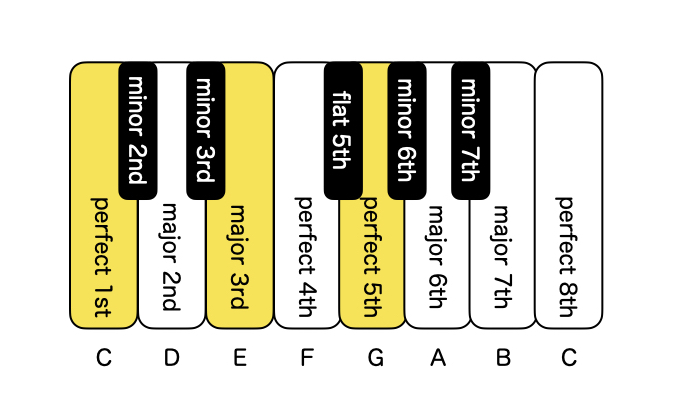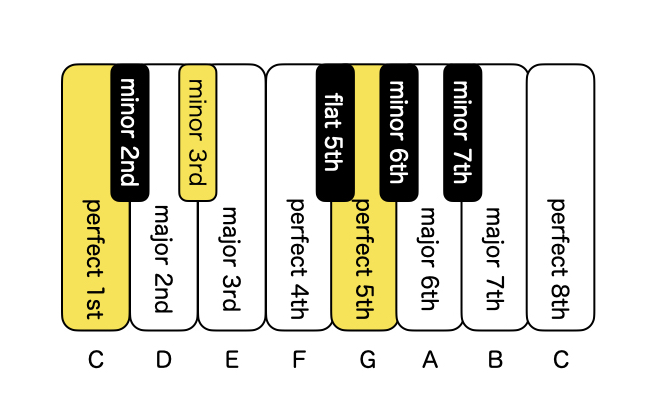A chord is a sound of multiple notes, and it’s the most important thing in guitar. C is a major chord, Am is a minor chord. After that, there may be numbers such as 7 and 9, but let’s leave them aside for now. In this page, we focus on the triad chords which consists of three notes.
A chord with just the alphabet is called a major chord, and one with the alphabet and m (minor symbol) is called a minor chord. These chords are basically made up of three notes. Major chords sound bright. If you play C, E, and G on the piano, it is a C major chord.
Minor chords have a melancholy feel to them. If you play A, C and E on the piano, it is the minor chord of A, which is called Am. Now let’s see what kind of notes these chords are made up of.

This is the component note of a C major chord. Basically, a chord that consists of three notes is called a triad, and it consists of the first degree (root note), the third degree, and the fifth degree. Both major and minor chords have the same 1st and 5th degree notes, but the 3rd degree note is different.
In the case of a major chord, the third degree is the major third. On the piano, if C is the root note, the major third degree is E and the perfect fifth degree is G. Therefore, C, E, and G are the notes that make up a C major chord. The major third degree is four keys away from the root including white and black keys, and the perfect fifth degree is seven keys away. Therefore, if the root note is D, the major third degree is F# and the perfect fifth degree is A, so D, F#, and A are the building blocks of a D major chord.

This is the component note of the C minor chord, Cm. Unlike the previous example, the third degree has been changed from major third to minor third. The third degree is very important. Minor chords consist of the 1st degree, the minor 3rd degree, and the perfect 5th degree. The minor third degree is three keys from the root note. The perfect fifth degree is also seven keys ahead. Therefore, if the root note is D, the minor third degree is F#, and the perfect fifth degree is A, so D, F, and A are the constituent notes of the D minor chord.
The third degree is very important, but in rock music, Power Chords that use only the first and fifth degrees are often used. They are neither major nor minor chords, but you can usually tell from the key of the song that this is a major chord without the third degree, and that this is a minor chord without the third degree. I’ll explain this in the section on diatonic chords.